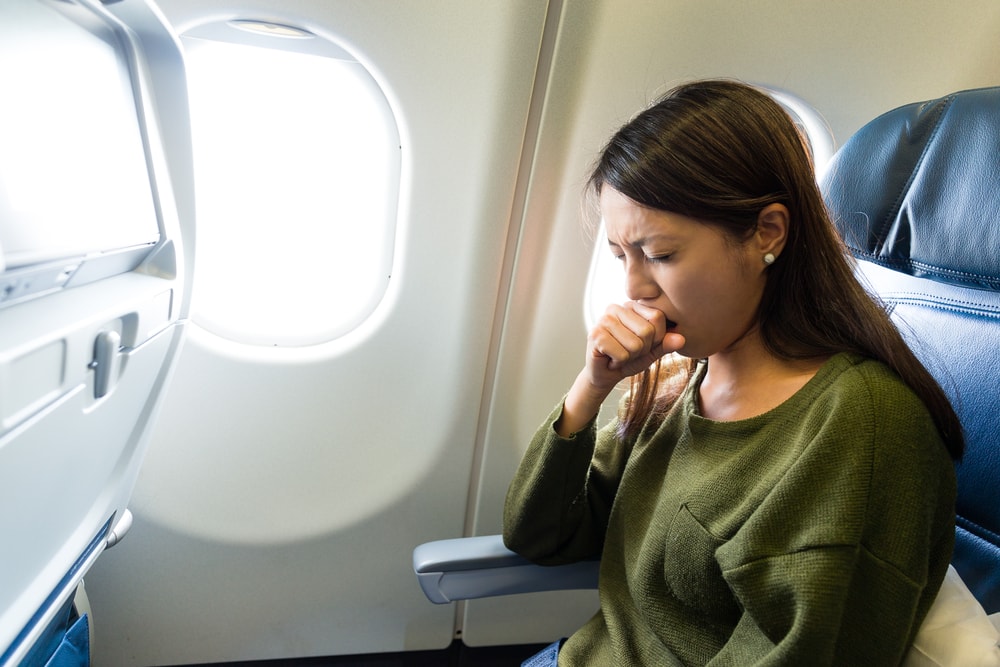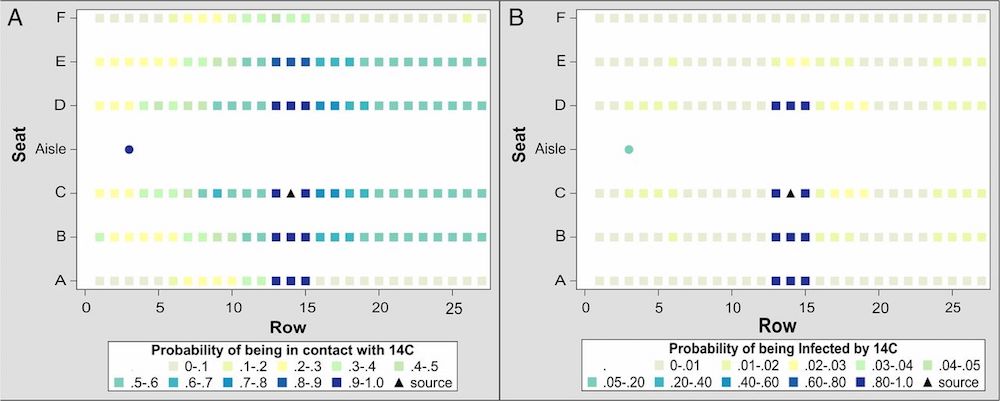Coughs On A Plane
7:10 minutes

When you fly on an airplane, you’re trapped inside a metal tube for a few hours with hundreds of other passengers, sharing the overhead compartments, lavatories, and air. It feels like there’s a good chance for disease to spread in flight—but just how likely is it?
In research published in the Proceedings of the National Academy of Sciences, Vicki Stover Hertzberg and colleagues tried to map out how respiratory viruses like influenza might spread during air travel. Members of the research team took ten transcontinental flights and carefully documented the behavior of passengers as they moved about the cabin—who got up during the flight, how long they lingered outside the restroom, and how the passengers interacted with each other and with the in-flight crew.
[There’s a gender gap in blockchain culture. But women want to change that.]
After crunching the data, they conclude that while you’re at a very high risk of infection from someone sitting within a few seats of you or the row in front or behind you, the transmission risk for flu or other diseases that spread via infected droplets drops off rapidly as you move further away from the infected passenger.

The researchers caution that other diseases that spread more via aerosols or from contact with pathogens on surfaces may spread differently on planes. That kind of contact with infected travelers in the waiting area, at the airport bar, or in baggage claim could all increase disease transmission.
Vicki Stover Hertzberg joins Ira to talk about the research, and what travelers might be able to take from their findings.
Filming a sneeze in slow motion helps scientists figure out how diseases spread.
Vicki Stover Hertzberg is a professor and the director of the Center for Data Science in the Nell Hodgson Woodruff School of Nursing at Emory University in Atlanta, Georgia.
As Science Friday’s director and senior producer, Charles Bergquist channels the chaos of a live production studio into something sounding like a radio program. Favorite topics include planetary sciences, chemistry, materials, and shiny things with blinking lights.